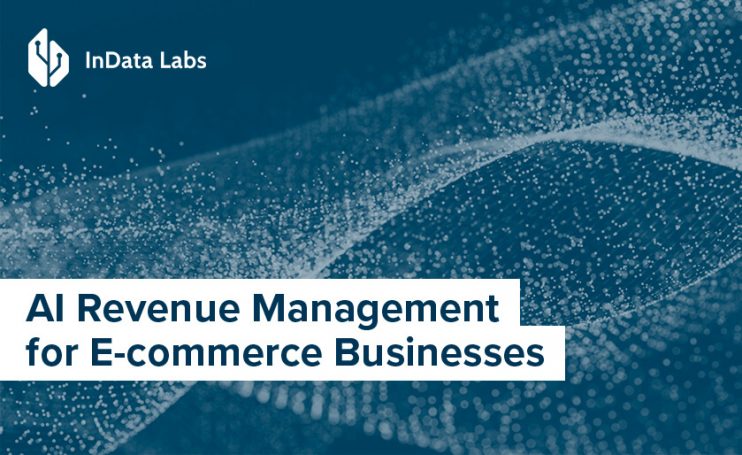AI has been disrupting most of the industries lately. In this article, we’re going to witness how AI’s been making its way into pricing and revenue management.
According to a recent survey of 1,700 business leaders conducted by Bain, 85% of B2B teams think their pricing decisions could be better and only 15% of them have the right tools and dashboards for setting and monitoring pricing. Having expertise in pricing and revenue management can give companies a competitive advantage, which is why it’s time for them to evaluate the applications of AI and machine learning in pricing and revenue management.
According to McKinsey, AI-based pricing and promotion have the potential to add between $259 Billion to $500 billion to the global market value. Moreover, with the developing business models, changing market dynamics, and constantly increasing competition, it has become imperative that companies turn to data for making accurate, reliable decisions.
Further, in this article, we are going to explore the applications of AI and machine learning in revenue management. But before jumping into those complexities, let’s get our basics clear.
What is Revenue Management?
In the simplest words, revenue management can be defined as an all-encompassing process that generates maximum revenue from any and every market condition. It includes a comprehensive statistical analysis of pricing that allows companies to set and monitor prices to have an upper hand over their competitors. It also includes product segmentation based on past customer behavior and buying patterns, which allows them to predict future customer behavior.
Both these activities/processes combinedly help companies to implement optimized pricing strategies and product availability that results in maximized revenue generation. Revenue management and pricing allow companies to align their prices as closely as possible with the maximum amount a customer is ready to pay for that product/service.

Source: Pexels
In simpler words, revenue management is all about selling the right product to the right customer at the right time, using the right distribution channels and tools at the right price. So where does AI or machine learning come into the picture? Let’s understand that with the concept of AI revenue management.
What is AI Revenue Management?
First, let’s unpack this complicated term – AI or artificial intelligence. What is AI? It is a branch of computer science wherein a simulation of human intelligence processes is created in machines or, more accurately, in computer systems. It literally means man-made intelligence.
So, where do revenue management & AI meet each other? For a few years now, AI has been making headlines, consistently. And for all the right reasons. It has been pushing the boundaries of man-made machines and their functionalities by automating tedious processes, reducing the overall time taken to complete tasks, eliminating downtime, enabling companies to provide 24×7 consistent support, and much more.
For example, now there are AI-based crypto grid trading bots that help investors execute their grid trading strategies seamlessly by letting pre-defined buying and selling rates for currencies and stocks.
Similarly, AI and company revenue can also make a dynamic pair. AI-based revenue management systems could be used for different analysis tasks like creating forecasting clusters, marketing segments based on historical data, evaluating competitor’s future pricing, demand level, and much more.

Source: Pexels
AI for revenue management will enable a data-driven approach that will help companies improve the accuracy of their evaluations and maximizing revenue and profit opportunities. Revenue managers can also use AI to automate repetitive tasks, clearing their time to concentrate on important tasks.
AI for Revenue Management in E-commerce
Let’s discuss how AI will revolutionize revenue management for E-commerce and businesses.
Offering Smart Discounts & Eliminating Unproductive Ones
Have you ever wondered why some of your discount offers are a hit with your customers whereas the others turn out to be as dead as doornails? The entire process of offering discounts to customers is quite complicated as it involves multiple levers which depend on your investment strategies and consumers’ behavior.
Considering discounts are the bread and butter for E-commerce businesses as the right discount offer can push the customers to buy NOW instead of delaying the purchase, it becomes imperative to run just the right offers. This is where AI could prove to be a game-changer. It could determine unproductive discount offers as well as suggest discounts rates & offers for particular customer segments, which could help you get the maximum ROI on your investments.

Source: Pexels
These unproductive discounts could include discounts on products that are resulting in low-profit growth, discounts lowing-return customers, etc. The money saved from eliminating such unproductive discounts could invest in higher-ROI, generating investments and activities helping E-commerce and businesses maximize revenue opportunities.
Maximizing Profit with Dynamic Pricing
We could define dynamic Pricing as a strategy used by many businesses to determine prices for their products based on the market demand.
How does dynamic pricing work? Well, heaps of data being generated by their customers and social media platforms are fed into an AI-powered software, for instance, which puts them together and connects the dots to gauge the current market state. This allows the businesses and e-stores to update the product pricing in real-time based on the market demand, which helps the pricing managers and revenue managers to make the most of the revenue opportunities.
There are three dynamic pricing strategies: demand-based, cost-based, and competitor-based. We can implement these using AI-powered or machine-learning software for your pricing managers.
Making Price Segmentation Strategies More Impactful
What happens when you offer a particular product at the maximum amount a particular customer segment is ready to pay? When we say ready to pay, it means the product is priced so well that the customers won’t think twice. They would buy your products on the spot.
Now, that situation resonates a lot with the definition of revenue management we earlier mentioned, doesn’t it? It definitely does because price segmentation strategies play a crucial part in optimizing revenue opportunities by pushing customers to complete the purchase.

Source: Pexels
Now, pricing segmentation can be based on 4 unique attributes: time, customer segment, location, and product form. AI-enabled software can provide companies with insightful data on customers’ locations, their habits & buying patterns, current market trends, etc. Revenue and pricing managers can use such data to create better customer segments and offer prices that would convert them instantly. This also has the potential to increase Average Order Value and might turn low-medium value customers into high-value customers.
Automation = Total Revenue Growth
This point might seem like an aggregation, but it’s definitely not – which you will agree to by the end of this point. There are three levers of revenue growth – number of customers, average shopping cart size, and average order value.
According to a recent survey by BCG of global business leaders who carried out digital transformations for their businesses within the last 5 years, 95% of their transformations used at least one revenue growth lever. 77% of the transformation’s financial impact was because of the revenue growth levers. These numbers show the importance of adopting automation for revenue management and growth.

Source: Pexels
For example, when you adopt an AI-enabled software that tracks your customers’ browsing history and uses the data to recommend the products at the checkout or in the promotional emails, it makes upselling and cross-selling seamless. This directly affects multiple revenue growth levers – average order value and average shopping cart size. AI is also disrupting the marketing industry, which gives marketers the tools they need to personalize the customers’ experience with the brand, which helps them convert more visitors into customers.
Everything put together, AI definitely has the potential to speed up revenue growth for your E-commerce business. So, it’s definitely not an aggregation.
AI is a Disruptive Force
There’s no way around automation, that’s for sure. It has been making its presence known, in a disruptive way, in various industries like marketing, healthcare, customer service and experience, BFSI, and revenue management. We’ve also seen artificial intelligence in logistics and sales, agriculture, and manufacturing, making them simpler by breaking down the large chunks of data into insightful and actionable pieces of information.
With its capabilities to reduce expenses, improve overall processes, and predictions, it can give any company/business/E-commerce organization a major competitive advantage. And your customers have got a taste of the improved, AI-enabled experiences, personalized messaging, and product recommendations, and they definitely love them and are going to expect the same from you. Since AI can directly contribute to your revenue growth, it will be a win-win.
Author Bio
Virginia Andrus is an independent Digital Marketing Consultant with 6+ years of marketing experience. Virginia is a chef by heart. In her free time, she is either writing marketing copies for brands and agencies or experimenting with new recipes at her home.
Develop AI-Powered Solutions for E-commerce
Need to develop AI-driven software for revenue management or dynamic pricing forecasting? Contact us at info@indatalabs.com to see how we can help.
